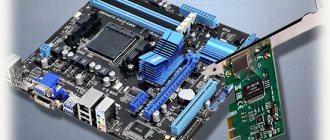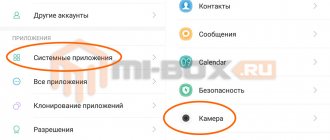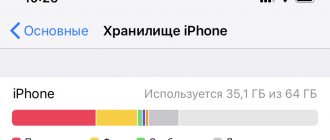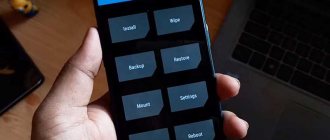Photo capabilities are one of the most important parameters by which a smartphone is chosen in 2022. Recently, the level of mobile cameras has increased significantly. Vendors began to actively improve image processing algorithms and promote the photographic capabilities of their devices. Google programmers were especially successful in this. In this article we will look at the main ways to install a Google camera on Xiaomi in order to make even a budget smartphone take photographs several times better.
Be sure to read the entire article! After installing GCam with HDR+, you won’t believe your eyes when you see that even your budget device has started shooting at the level of expensive iPhones, or even better.
Installing a Google camera with HDR+ on new Xiaomi phones takes just a few clicks. However, to install it on inexpensive mobile phones, you will need to activate the Camera2 API (HAL3).
Below you will find an accessible description of the benefits of HDR+ and Enhanced HDR+. And in the second part of the article, we have prepared a step-by-step guide (working tested on all popular Xiaomi phones) for activating Camera 2 API and installing Google Camera.
Why Google Camera with HDR+ is the best photography app?
Here is a short list of the undeniable advantages of this camera.
- Amazingly enhances the detail and quality of your photos.
- Excellent electronic stabilization when recording videos.
- Unique shooting modes.
- Dynamic range expansion (DD is the camera’s ability to simultaneously display light and dark areas in a photo).
- Effectively combat overexposure in photographs.
Xiaomi has done a good job of upgrading its photo processing software. Their phones now have an advanced night shooting mode, integration with artificial intelligence, scene recognition, etc. This allowed the Chinese company’s devices to enter the TOP 10 best camera phones rating, compiled by the authoritative publication DxOMark.
Xiaomi Mi 9 earned 107 points. It overtook the iPhone XS and took third place in the ranking.
All Xiaomi devices (even budget ones) use expensive, high-quality photo modules from Sony with enormous potential. The notorious HDR+ technology, which is only available in the Google Camera application on Pixel smartphones, helps to reveal it. It became available to everyone else thanks to the efforts of enthusiastic programmers. The Kharkov developer under the nickname “BSG” was the first to port it to many mobile devices.
Basic GCam Modes
Night Sight
A useful mode for taking photos and videos in low light conditions: in the evening or at night, indoors or outdoors. To enable the mode, select Night in the GCam main menu. It works without a flash, so it is useless in complete darkness.
Try to keep light sources outside the field of view of the lens to avoid glare. You can achieve better clarity by placing your smartphone motionless. Use a tripod or just prop it up on something. Night Sight mode works well even in inexpensive models such as Redmi Note of different series.
Motion
This feature is similar to Live Photo mode on iOS. If it is activated, each photo is accompanied by a short 2-second video. If the person in the frame blinked or looked away, you can simply replace it with another frame from the saved recording.
Smartburst
A mode useful in dynamic scenes in order to shoot fast-moving objects: children, animals, athletes, cars. Holding the shutter button for several seconds after pressing it creates a series of frames, from which one of the most successful and sharp ones will be selected.
Slow Motion
As the name suggests, this is a slow motion mode. In it, even a budget smartphone is capable of recording video at a frequency of 120 or 240 frames per second (depending on the characteristics of the model).
Sphere
You can find this mode in the app called Photo Sphere. An interesting feature that creates a photo in the style of a spherical panorama with 360° coverage.
Photo Sphere mode takes fantastic photos. Photo: softzone.es
Portrait
Photos taken in this mode blur the background. Works even with HDR+ enabled. To separate the background, the smartphone does not require an additional camera, as this happens at the software level. You can activate portrait mode for both the main and front cameras.
Google Lens
Once this feature is activated, GCam begins to analyze everything that is located in front of the camera lens. In this mode, you can, for example, translate the text on a sign, determine the breed of a cat, find out the name of a plant, and so on. The function only works when Internet access is turned on.
How does HDR+ work?
Before moving on to the main topic and telling you how to install Google camera on Xiaomi. Let’s just say a few words about the principle of operation of the technology. The name HDR stands for High-Dynamic Range. Its standard version is found in every modern phone. It helps expand the DD, which is narrow in all smartphones due to the design of the camera module.
In HDR mode, the device takes three pictures in a row.
- The first is with normal exposure (the setting that determines how dark or light the photo will be).
- The second is with overexposure (high brightness).
- The third one is with reduced exposure.
The first frame is taken as the basis. Then the camera captures the dark areas from the second, and the light areas from the third and combines them together. The result is a photo in which bright and dark areas are clearly conveyed at the same time. Usually it has higher detail.
HDR+ Features
This algorithm stands for High-Dynamic Range + Low noise and is an improvement on the regular HDR algorithm. It has two modes.
- Standard HDR+. The device takes from 3 to 30 underexposed frames with a short shutter speed. Selects the best and overlays data from other images on it.
- Advanced (extended) HDR+. As soon as the user launches the camera, it begins to take photographs without interruption with different parameters and save frames to the buffer. After releasing the shutter, the best images are selected and stitched together using the same principle.
Due to the unique noise reduction technology, the amount of digital noise in a photo with HDR+ tends to zero. The pictures come out unblurred, since long shutter speeds are not used.
Photo on the left - without HDR+, photo on the right - with HDR+
So far, no manufacturer has surpassed this development by Google, so these instructions on how to install a Google camera on Xiaomi are extremely relevant.
Night Sight mode - the quintessence of mobile photography
Google's algorithms are constantly improving. The culmination of the development of technology was “Night Sight” - a night shooting mode based on machine learning with elements of artificial intelligence. Night photos taken with it amaze with brightness, sharpness and wide dynamic range.
⇡#Autonomous work
In the Redmi Note 8 Pro, the manufacturer installed a very capacious battery, reasoning quite logically that a smartphone with a 6.5-inch display needs something more than the usual four thousand milliamp-hours. It uses a 17.1 Wh battery (4500 mAh, 3.8 V) and I won’t say that the device demonstrates any special “survivability”. But it’s not bad - even with a full load, the smartphone will last through daylight hours, and in ordinary use scenarios you can count on a day’s work.
In our traditional test with HD video playback at maximum brightness, with updates and notifications turned on, the Redmi Note 8 Pro lasted ten hours - for a smartphone with an LCD screen, the level is, in principle, not bad.
The USB Type-C port is used for charging; Quick Charge 4 (18 W) is supported. But as expected, the kit does not include an 18-watt adapter – only a standard 10-watt one. With its help, it takes about a little over two hours to fully charge the smartphone.
Checking compatibility with Camera2 API
As we wrote earlier, GCam requires activation of the Camera2 API to work. There are no problems with this on Xiaomi flagship smartphones, since it is already included in them. All that remains is to download the application from the site listed below and run it.
List of devices with active HAL3:
- Mi 9, 8;
- Pocophone F1;
- Mix 2s, Mix 3;
- Redmi Note 7, 7 Pro.
If you don’t have a top-end device or an old one, then installing Google Camera will take a little trouble. Do everything according to our instructions, and there will be no installation difficulties.
Whatever device you have, we recommend that you follow a simple procedure to check the functionality of HAL3. A simple “Camera2 API probe” application is suitable for this.
- Launch Play Market and enter the name of the program in the top search bar.
- Go to it and install it for yourself.
- Click "Open".
The data you need is written in the “Hardware support level” line. They are the ones who show compatibility. There are four levels of driver support in total, namely:
- LEVEL_3 — ensures the functionality of the main options, allows you to take photographs in .RAW;
- FULL - full support;
- LIMITED - partial compatibility;
- LEGACY - only Camera1 API is supported.
For example, checking Redmi Note 5 with the prescribed activator shows “LEVEL_3” - you can install the camera application and use it. If you have LEGACY, you should go through the procedure for turning on HAL3.
Detailed review of Xiaomi Redmi Note 8 Pro: a smartphone that breaks stereotypes
Redmi Note 8 Pro is another attempt by Xiaomi to release a smartphone on the Mediatek platform. The first, as we remember, turned out to be a failure - Redmi Note 4 on Helio X20 was much inferior to the version on Snapdragon, got terribly hot, did not work stably and quickly drained the battery. After this, Xiaomi abandoned the idea of using MTK chipsets in its devices for a long time. And now, a few years later, Redmi Note 8 Pro comes out on the Helio G90T. The company presents the smartphone as a powerful device, with a liquid-cooled gaming processor. Skeptics, of course, immediately began to criticize the new product, without even understanding the device. Others, on the contrary, praised him with might and main. In general, the hype around the new product is no joke. I decided to personally get acquainted with the device and, as usual, waited for the release of a stable global version, in which the firmware had already been finalized. And I want to tell you that the company’s smartphone came out great, but with some reservations. And what surprised me most was the same processor from MTK, which simply broke all the templates and really managed to surprise. Actually, I hasten to share with you my test results and impressions of the most “suspicious” Xiaomi smartphone of 2022.
Specifications of Redmi Note 8 Pro:
- Screen : IPS FullHD+ 6.53″ with a resolution of 2340 x 1080 (maximum brightness up to 500 NIT), Corning Gorilla Glas 5 protective glass with oleophobic coating
- Processor : 8 core MTK Helio G90T with a frequency of up to 2.05 Ghz
- Graphics : Arm Mali G76 MC4, 800 Mhz
- RAM : 6 Gb LPDDR4x with a frequency of 2133 MHz, operates in dual-channel mode
- Built-in memory : 64 Gb or 128 Gb UFC 2.1 + ability to use micro SD card up to 256 Gb
- Cameras : Module of 4 cameras: Main - 64 MP, f/1.9, 1/1.7″, 0.8µm, with PDAF autofocus, Ultra wide-angle - 120° 8 MP, f/2.2, 1/4″, 1.12µm, Macro lens - 2 MP, f/2.4, 1/5″, 1.75µm, Secondary camera for depth detection - 2 MP, f/2.4, 1/5″, 1.75µm. Front camera – 20 MP, f/2.0, 1/3″, 0.9µm
- Wireless interfaces : WiFi 802.11a/b/g/n/ac 2.4GHz/5GHz, Bluetooth 5.0, navigation using GPS satellites, Glonass, Beidou, Galileo
- Communication : GSM B2/3/5/8, WCDMA B1/2/4/5/8, FDD-LTE B1/2/3/4/5/7/8/20/28, TDD-LTE B38/40
- Additionally : Liquid cooling of the processor, NFC with support for contactless payment, fingerprint scanner, IR transmitter for controlling household appliances, fast 18W charging, magnetic compass, OTG
- Battery : 4500 mAh
- Operating system : MIUI Global 11 based on Android 9
- Dimensions : 161.4 mm x 76.4 mm x 8.8 mm
- Weight : 200 g
find out the current price
video version of the review
Content
- Packaging and equipment
- About the charger, charging speed and battery capacity
- Appearance and ergonomics
- Screen
- Software part
- Communication and Internet
- Performance and synthetic tests
- Throttling test, heating and stability
- Gaming Features
- Sound
- Camera
- Autonomy
- Results
Packaging and equipment
Some changes affected the box. Now you don’t need to look for the “Global Version” label on the packaging: the global version comes in a white box with a picture of a smartphone, and the Chinese version comes in a red box.
When ordering the global version, you will receive a smartphone certified for your country, in my case this is a national mark of conformity.
The kit includes a smartphone, cable, charger, documentation, a tray eject key and a transparent silicone case.
The user manual contains basic information on the device, as well as information about certification and safety of use. SAR levels for head and body are indicated. With a permissible 2 W/kg, the maximum SAR value for the head is 0.997 W/kg, for the body - 1.466 W/kg.
About the charger, charging speed and battery capacity
The included charger supports Quick Charge 3.0 technology and, according to the specifications, delivers up to 18W.
The actual characteristics correspond to the declared ones, the adapter produces 5V/3A, 9V/2A and 12V/1.5A.
And it even has a good power reserve. Using an electronic load, I managed to extract 21W from it, instead of the stated 18W.
Now let's look at the charging speed. If you deeply discharge the battery (before turning off the smartphone), then the first 5 minutes are charged at a voltage of 5V and a maximum current of 1A. At this moment, the notification indicator blinks and it is not possible to turn on the smartphone. This is a kind of battery protection, because loading the OS consumes a lot of energy. After the specified time has passed (sometimes a little earlier), charging switches to Quick Charge 3.0 mode. During the test, the indicators were as follows: voltage 6.5V and current up to 2.5A, i.e. maximum power is within 16W. The LED starts to glow constantly and you can now turn on your smartphone and use it as usual.
It is worth noting that the Redmi Note 8 Pro increased the battery capacity to 4500 mAh, but it charges quite quickly. In fact, it takes 2 hours to fully charge, and it reaches 80% in 1 hour and 15 minutes:
- 15 minutes - 15%
- 30 minutes - 32%
- 45 minutes - 49%
- 1 hour - 64%
- 1 hour 15 minutes – 80%
- 1 hour 30 minutes - 91%
- 1 hour 45 minutes - 98%
- 1 hour 52 minutes - 100%
The filled capacity was 22562 mWh. If we translate this into mAh at a voltage of 5V, we get 4512 mAh. The declared capacity fully corresponds to the real one.
Appearance and ergonomics
Redmi Note 8 Pro surprises primarily with its colors. In addition to white and gray, which also look interesting, by the way, “pine green” has been added to the line, which looks simply mesmerizing. And yes, this color, like a chameleon, can take on different shades: from light green to azure. Depends on lighting, light angle and other factors.
Here you are holding a smartphone in your hand and it is almost black with reflections on the rounded edges.
We turned it a little and the body began to sparkle with new colors.
It turns out something like a gradient and the shade depends heavily on the lighting.
Indoors in the pictures the case looks almost blue due to the lighting and surroundings and the slightly incorrect white balance chosen by my camera. But once you take it out into the sun, we see a pleasant mint shade. In general, the colors are awesome and immediately became a bestseller; the same gray and white ones are bought less often, although in my opinion they are also cool.
In design, the smartphone follows the latest trends; we have a sandwich of glass panels with a metal frame. Moreover, this is not some nameless tempered glass, but real Corning Gorilla Glass 5, which is confirmed on the official website corning.com. Gorilla glass is used not only on the front part, but also on the back. I have been using the smartphone for more than 3 weeks, without a protective case or glass, and its surface remains pristinely clean.
The camera block is located in the center and consists of a main module, an ultra wide-angle module, a module for macro photography and an auxiliary module for determining depth in portrait mode. There is a fingerprint scanner located directly below the cameras. I was afraid that due to this arrangement, my finger would constantly fall on the camera lens, but in practice my fears were not confirmed - the finger clearly falls on the scanner. The scanner itself is simply cosmic. The recognition accuracy and speed is something incredible; a fleeting touch is enough for a smartphone to recognize a fingerprint.
One of the disadvantages is the block with cameras that protrudes strongly from the body. Moreover, it protrudes so much that even the supplied case does not save the situation. The camera, of course, has protection in the form of a small metal frame that protrudes above the body by a fraction of a millimeter and protects the glass from scratches during everyday use, but if it falls badly, this may not help.
Therefore, I recommend immediately purchasing a protective glass for the camera, complete with a metal cover in the color of the body (you can see it here).
The rest is in perfect order. A standard 3.5 mm headphone output is in place, a modern Type C connector is provided for charging and connecting to a computer, and a high-quality audio speaker allows you to watch videos and play games without using a headset.
Metal buttons can be found in their usual place; when shaking, they do not dangle or ring. In general, the assembly of the smartphone is at level A of brands. Holding the Samsung S9 in one hand and the Redmi Note 8 Pro in the other, you begin to understand why Xiaomi smartphones have been so popular lately. In fact, the budget Redmi Note 8 Pro is visually and tactilely in no way inferior to the eminent Korean. At least it's new.
The SIM card tray is located on the opposite side. The presence of a silicone seal hints at basic water protection, but of course the smartphone has not been officially certified according to IP standards.
The tray here is combined and will allow you to install 2 nano SIM cards.
Or one SIM card and a micro SD memory card. The smartphone recognized the 256 GB memory card and works fine with it. But considering that even the younger version is equipped with 64 GB of built-in memory, and the older one has 128 GB, then for most users a memory card will simply not be needed.
Another signature feature of the Redmi Note series smartphones is an infrared transmitter for controlling household appliances. TVs, air conditioning, TV set-top boxes - all of this can be controlled directly from the smartphone screen.
Ergonomics are fine. The smartphone is easy to use and fits well in the hand. Despite the increase in battery capacity to 4500 mAh, the device cannot be called a “fat man”. The thickness of 8.8 mm is exactly the same as, for example, the Xiaomi Mi 9T with a 4000 mAh battery.
Screen
The screen diagonal has also increased. If in Redmi Note 7 it was 6.3″, then in Redmi Note 8 Pro it is already 6.53″.
At the same time, physically the smartphone has increased by only 1 mm in width and 2 mm in length. But the frames around the screen have become smaller. The ratio of screen area to body area is 91.4%.
The drop-shaped cutout for the front camera has become smaller and neater.
The screen has a high maximum brightness of up to 500 Nits, making the device equally comfortable to use both indoors and outdoors.
A high-quality IPS matrix with a contrast ratio of 1500:1 shows a very good black level and does not flicker like most AMOLEDs. There is information that the next Redmi Note may already be equipped with an AMOLED screen, which actually means capturing the middle class. It's sad, but everything is heading towards the fact that in a couple of years the overwhelming majority of smartphones will have AMOLED screens and you and I will have no choice.
- Color rendering is pleasant, color temperature is neutral. In the settings, as usual, you can adjust the color tone according to your preferences.
- There is a reading mode that reduces the harmful effects of the blue part of the spectrum on vision. It can be activated manually or automatically according to a schedule by setting the duration and filtering level. This mode has been certified by the well-known Tüv Rheinland.
- For users who don't like the waterdrop notch on the screen, there is an option to hide it.
Viewing angles are high, there is no color distortion at angles. At the moment, IPS matrices have reached the peak of their development and actually give out everything they are capable of. As with any IPS, at a certain angle you can notice the glow effect, here it is visible diagonally. But at an angle, the white does not have a green tint like AMOLED and there is no PWM.
If we specify the advantages of some types of screens over others, then AMOLED looks more colorful and can offer “endless black”, and IPS is more pleasing to the eye and safer for reading in the dark at low brightness.
Software part
The smartphone arrived at the beginning of November and then it worked on MIUI 10.4.4, and towards the end of the month I received MIUI 11.0.1. Updates are released regularly and include bugfixes and security updates. The latest MIUI 11.0.2.0 update arrived literally today and I haven’t even had time to install it yet.
MIUI 11 is based on Android 9 and, compared to MIUI 10, has a completely redesigned graphical interface: new icons with animation, rethought settings, dark mode and much more.
The changes affected not only the visual component, but also the audio. There are new ringtones, notification sounds, as well as a “weather” alarm clock and an alarm clock with nature sounds. The melody that will wake you up in the morning directly depends on the weather outside the window and the date.
There is an interesting section “digital well-being and parental controls”, which allows you to track statistical data on smartphone use: the number of launches of a particular application, the time spent in each application or game, and other useful information. You can set up parental controls if a child will use the smartphone, set up rest mode and notifications.
There are also functions that we have become accustomed to in the previous version of MIUI: the borderless screen allows you to control your smartphone using on-screen gestures, there is face unlocking and broadcasting of screen contents via WiFi to your TV. There were also some unpleasant surprises. In the current version of the MIUI firmware, it has been replaced by the standard one from Google, which cannot record telephone conversations.
A long-awaited feature has appeared that fans have been waiting for to pay for purchases with their phone. Yes, Redmi Note 8 Pro is equipped with an NFC module that allows you to use GPay. Important! If contactless payment does not work, then you need to go to the settings and in the “Security element location” section, select the “HCE Wallet” item.
With pre-installed applications everything is simple. Traditionally, all the main applications and services from Google are installed (Play Market, mail, browser, maps, photos, etc.), as well as proprietary applications from Xiaomi (Mi remote control, a set of “security” utilities, tools, etc.). There are also several pre-installed applications, such as Facebook, Netflix and a couple of simple games (all this stuff can be easily removed if necessary).
Communication and Internet
Let's move on to direct functions. There are no comments regarding the main points: the earpiece has a good volume reserve, and speech sounds clearly and without distortion. A reliable signal ensures uninterrupted communication both outdoors and indoors. The international version supports all frequencies used by operators, which can be checked through the engineering menu.
For gamers, an X-shaped WiFi antenna was installed in the smartphone, which provides a stable reception signal when using the smartphone in a horizontal orientation. And of course there is support for the modern ac standard. In speedtest, on a 100 Mbps tariff plan, the smartphone shows 92 - 97 Mbps in the 5 Ghz range and 52 - 60 Mbps in the 2.4 Ghz range. But what’s really surprising is the Internet speed in 4G, where the smartphone set a record among all the models I tested: 63 Mbps for downloading and 30 Mbps for uploading. Just think about it, the speed of mobile Internet is faster than the speed of WiFi. These numbers will be different for everyone, since the speed depends primarily on the operator, but I always try to test the mobile Internet in the same place and at the same time in order to minimize the scatter of results due to coverage and network congestion .
Well, now we actually begin to break stereotypes. Stereotype No. 1: MTK processors are very bad at navigation. This was true a couple of years ago, but not now. The smartphone works with GPS, GLONASS, BEIDOU and GALILEO satellite systems and literally in a couple of seconds finds almost 50 satellites, 28 of which are in active connection. Positioning accuracy is 1 meter and all this in cloudy autumn weather. With clear skies the numbers will be even higher. Like the icing on the cake - a magnetic compass that will help with positioning on the map.
Of course, the navigation was tested in real conditions, both in pedestrian mode and in a car trip. In both cases, the track was recorded accurately and corresponded to real movement. Minor difficulties arose only on the covered reinforced concrete bridge (the track went a couple of meters to the side), where the positioning was lost for the vast majority of smartphones.
Performance and synthetic tests
The latest Helio G90T is used as the processor. MTK has long relied on the Helio line, which is the middle class, and the Helio G90T is its new flagship model. In my opinion, the turning point for MTK occurred after the release of the P60, which is still a very good processor today. But the G90T is of course much more powerful and is positioned by the manufacturer itself as a gaming device. An 8-core processor with a frequency of up to 2.05 Ghz combined with a Mali G76 video accelerator takes MTK to a new level. And to prevent the processor from overheating, Xiaomi provided liquid cooling for it.
278,000 points in Antutu and the smartphone outperforms such giants as Samsung S9, Xiaomi Mi 9T or Huawei P20 Pro. Good results, both in the processor part and in the graphics part, break another stereotype that MTK is made by weak processors.
In Geekbench 5, the results are particularly impressive: 495 points in single-core mode and 1627 points in multi-core mode. In the results comparison table, the smartphone even beats the Poco F1, which is valued by gamers for its good performance and affordable price.
- PC Mark Work 2.0 - 10,063 points
- 3D Mark Sling Shot Extrme - 2378 points using Open GL 3.1 and 2462 points using Vulkan
- AItutu artificial intelligence test - 79253 points
And another comprehensive benchmark that tests the processor, graphics, RAM and built-in storage - LDS Benchmark. It is somewhat reminiscent of Antutu, but I liked it even more, because it is more extensive. 232,000 points. To compare the results, you can download it from the market and run it on your smartphone (the benchmark is free).
Separately, I checked the speed performance of the drive. UFC 2.1 memory is installed here, so the speeds are impressive: 536 MB/s for reading and 200 Mb/s for writing. I tested with an impressive amount of data of 24 Gb, so everything is fair. When copying small files, the speed is even higher.
RAM standard LPDDR4X operates in dual-channel mode and provides copy speeds of more than 21,500 MB/s.
The CPDT benchmark also tests storage and RAM, but uses different algorithms. The results are comparable to smartphones such as the OnePlus 5T or Samsung S9, which you can actually see below.
As for personal feelings from use, the device works very quickly in real life, instantly responding to my actions. Smooth operation of graphical interfaces, quick installation and launch of applications, convenient reading of the browser with many open tabs and use of social networks without lags when scrolling pages, multitasking and switching between applications - the device is capable of all this. Having switched from the flagship Samsung to Redmi Note 8 Pro for testing, I did not feel any discomfort or desire to quickly return to my main device, and this already says a lot.
Throttling test, heating and stability
The biggest question for the processor is whether it will overheat and how much performance will decrease during long-term resource-intensive tasks. You can find conflicting information on the Internet. Some talk about the presence of throttling, while others, on the contrary, show its absence. The truth, as usual, was in the middle.
I conducted the first test in a standard format - 15 minutes. Performance was at the same level for several minutes, then it began to sag. As a result, the processor delivered on average 80% of its maximum performance, i.e. the drawdown was 20%. I became very interested, because I saw with my own eyes an article with a throttling test of this smartphone and there was no performance drawdown at all. I suggest you see everything for yourself. The first screenshot is my result, the second screenshot is the result of another author. Yes, he doesn’t have throttling, but if you look at the performance of his smartphone, you can see that it averages 94.89 GIPS (96.83 Max and 92.182 Min). While my result is much higher than 130.996 GIPS on average (147.85 Max and 112.96 Min). That is, in fact, my smartphone, even with maximum heating and loss of performance, produces much better performance than another author’s smartphone at peak performance. Strange, don't you think? The explanation is simple - the device was raw at the time of the test, most likely even with Chinese firmware, and for some reason the throttling test was unable to load all the cores. They did not work at full capacity and, accordingly, did not heat up, and hence the absence of a decrease in productivity.
Next, I decided to extend the test for another hour and see what could happen under very long constant loads. At the same time, I monitored the cores and temperature. 6 cores worked at a constant frequency of 2 Ghz, but the last 2 cores changed their frequency depending on the heating: first they reduced it to 1.53 Ghz, then to 1.3 Ghz, and then completely to 1.08. Didn't go any lower. The remaining 6 cores firmly held 2 Ghz. Actually, the result turned out to be approximately the same as with the 15-minute test, it did not get any worse. Therefore, I can state the fact that there is a decrease in performance from long-term load and it is 20% on average. Is it good or bad? This is normal; almost all smartphones experience a slight drop in performance under load. For example, the Xiaomi Mi 9T has a performance decrease of 9%, the MI 9SE has a 24% decrease, and the Redmi Note 7 has a 27% decrease (all data is taken from our tests, you can find them in my previous reviews). As you can see, the indicators are quite normal, after all, no one is shouting that Redmi Note 7 on Snapdragon 660 is terribly throttling? And in general, off the top of my head I don’t even remember a smartphone that doesn’t drop frequencies under load. This is just unreal. Processors are becoming more powerful, but heat needs to be dissipated somehow. That’s why liquid cooling was installed here and why there’s such a sane result here. Well, we can probably assume that the Helio G90T has destroyed stereotype 3 - it throttles no more than processors from Snapdragon.
To all of the above, it is also worth adding the almost complete absence of heating. Even after 30 minutes of playing PUBG, the case remains barely warm, and no matter how much I loaded the smartphone with various tasks, I was unable to warm it up properly. Although the first reviews noted noticeable heating, apparently with updates this problem went away.
Gaming Features
I checked the gaming capabilities of the smartphone using the gamebench benchmark (official website). The first game is the traditional WOT Blitz. The game itself is not too complex for modern smartphones, but there is an opinion that it is poorly optimized for Mediatek processors. I boldly set the graphics settings to high using HD textures and turned on the display of vegetation in sniper mode. The end result was a beautiful picture and smooth gameplay. Very rarely there were drops to 55 fps, but most of the time the counter stubbornly showed 60 fps. The processor load averages 12% - 13%, memory consumption does not exceed 800 MB.
Next is Asphalt 9, where I also set the graphics settings to high. The game is limited to 30 fps and it shows this value 94% of the game time. CPU load 15% - 20%, RAM consumption up to 1.2 GB.
Well, now the games are more complex and of course I couldn’t ignore Call of Duty, which was recognized as the best game of 2022 in the Play Market. A team shooter with beautiful graphics and dynamic gameplay.
The graphics quality was set to very high, the number of frames per second was set to high, and blur and shadows were also enabled in real time.
The average FPS turned out to be 59 (80% of the game time), the maximum dropped to 50 Fps. The processor is loaded at 25% - 30%, memory consumption is up to 900 MB. The game works great and pleases with its realistic graphics.
Of course I couldn't ignore PUBG. The game immediately offered HDR graphics, but when I went into the settings, I saw that the graphics could be improved further. Having selected “maximum” and the “ultra” frame rate, I moved on to testing.
The average FPS was 40 frames per second, the game runs great with maximum settings. It is noteworthy that in other smartphones, for example MI 9T and MI 9SE, graphics are limited to lower settings and it is not possible to fully evaluate the game in an official way.
And finally, I checked the game Life is Strange, which was released on the Sony Play Station 3 game console in 2014 and is considered one of the best games released on it of all time. Now it is also available on Android, but you can play it normally only on powerful smartphones, such as the flagship MI 9. On weaker smartphones, fps can drop to 15 - 20.
The average fps is 30, with rare drops to 25-28 fps, which is quite normal for a game of this genre. The processor load does not exceed 30%, RAM consumption is a little more than 1 GB.
In general, I can note that the smartphone runs absolutely any game at the highest possible graphics settings. Yes, it can be considered a game.
Sound
The smartphone sounds fine with headphones, but nothing more. The same Snapdragon can boast of a proprietary Aqstic audio codec, which brings the sound to the same level as budget HiFi players. Here everything is noticeably simpler and in direct comparison the sound is noticeably inferior. The smartphone can be praised for its high volume level and powerful low frequencies, but in contrast it lacks a little detail in the highs. The smartphone performs well in pop, electronic and other modern styles, while complex genres such as jazz are difficult for it.
Traditionally, in the settings you can find proprietary MI sound improvement technology and presets with various headphones, and often they really help make the sound more musical. There is also an equalizer for adjusting frequencies to suit your preferences.
As for wireless audio transmission, there is only support for SBC and AAC codecs, but AptX is unfortunately missing.
Camera
The Redmi Note 8 Pro smartphone has 4 cameras on board, but in fact only the main one with a 64 MP Samsung ISOCELL Bright GW1 sensor is of high quality. To help her, they installed an 8 MP wide-angle camera and 2 2 MP auxiliary cameras for macro photography and determining the depth of the scene. In daylight, the camera takes clear pictures, focusing quickly and accurately on objects. To achieve a better result, Super Pixel 4 in 1 technology is used, when 4 pixels are combined into one and instead of a 64 megapixel photo you get a 16 megapixel, but sharper one. I suggest you familiarize yourself with the examples (pictures are clickable), you can also download them from my cloud for self-assessment.
This is how the camera shoots in cloudy weather. Uniform detail throughout the image, good contrast and natural colors.
The camera interface has a 2x zoom option, but since the smartphone does not have a telephoto lens, the camera’s zoom is only digital. Overall not bad and the photo looks detailed.
Focusing is fast and error-free. More examples of photos taken in cloudy weather.
In sunny weather and good lighting, everything is as expected.
An ultra wide lens can help out when you need to photograph a large building, but it won't fit entirely into the frame. Let's look at the picture taken with the main camera - everything is clear and detailed, the colors are natural.
And here is a photo taken from the same place with an ultra wide camera. We see that there are many more objects in the frame, but at the same time there is not enough sharpness at the edges, and the contrast here is clearly turned up more than expected.
The next point is the ability to take a photo in 64 MP resolution. This is what a standard resolution photo looks like.
And here it is in 64 MP mode. At first glance, there are no differences, except that in the first case it takes up 7.64 Mb, and in the second - 28.8 Mb.
But this is only at first glance. Once you zoom in on the picture, everything will fall into place. This is what a 100% crop from a 12 MP image looks like.
And here is a similar part of the frame cut out from a 64 MP image. Much more details!
And this is not even a full crop, that is, you can zoom in further. Here is a 100% crop from a 64 MP image.
As you can see, a 64 MP camera is not just marketing and in many cases can be a big help. In simple terms, you can crop pictures without any visible degradation in quality or print pictures in huge sizes.
Next, the macro camera. In my opinion, with a resolution of 2 MP it is completely useless, because the same result, and often even better, can be obtained if you take a picture with a standard camera and then zoom in. Here is an example of a macro shot.
The front camera is of good quality and is generally suitable for selfies and video conversations. When shooting due to the focal length, the background is naturally blurred, but it is possible to use portrait mode and enhance the blur programmatically.
Now about shooting at night. I think no one will deny that Xiaomi smartphones here are not yet up to par. Well, that is, everything is not completely bad, but soap is of course present, this is especially noticeable on small parts.
Using night mode adds details and makes the photo more contrast, but noise appears and the chance of getting a blurry photo increases many times (due to increasing the shutter speed).
Very often in the comments to my reviews it was pointed out to me that I did not pay attention to the possibility of installing a GCAM camera, which takes noticeably better photos at night. I'm correcting myself. This smartphone also has GCAM, you can download and find installation instructions in the profile thread on w3bsit3-dns.com. I chose the latest camera port at the time of writing, MGC_6.1_X6_RN8Pro_Edition_3.0. The installation is simple. Ruth is right or dancing with a tambourine is not needed.
In general, I have an ambiguous attitude towards the GCAM camera; what I don’t like most about the stock camera is its slowness. But it really takes pictures at night an order of magnitude stronger, showing better detail and no “soap”.
Let's do a little low light comparison. Here is a shot taken with a stock camera, pay attention to the paving slabs.
The same thing, but on GCAM. There are noticeably more details.
I repeat that in my opinion it makes sense to use GCAM only at very low lighting levels. Even ordinary artificial lighting in a room is enough to use a stock camera with good results.
As for video, everything is on par with other smartphones in a similar price category. The camera can shoot in 4K (30 fps only) and Full HD (30/60 fps). Electronic stabilization is only available when shooting in 1080p quality.
Stabilization works well, but detail suffers.
But in 4K it’s the other way around: detail is good, but there’s a lot of shaking when shooting.
Autonomy
Another stereotype about smartphones with MTK processors is that they drain the battery very quickly. This was indeed the case before, but this is not about Redmi Note 8 Pro. The Helio G90T processor is built using a modern 12 nm process technology and is not particularly power hungry. Moreover, the battery capacity was increased to 4500 mAh. Let's look at various usage scenarios and compare with its predecessor (in the test we used the same video clips).
Redmi Note 8 Pro
- Youtube in 1080p resolution, screen brightness 50% - 17 hours 51 minutes
- Youtube in 1080p resolution, screen brightness 100% - 8 hours 57 minutes
- Video from internal storage at 100% brightness - 10 hours 26 minutes
Redmi Note 7
- Youtube in 1080p resolution, screen brightness 50% - 14 hours 59 minutes
- Youtube in 1080p resolution, screen brightness 100% - 7 hours 43 minutes
- Video from internal storage at 100% brightness - 8 hours 40 minutes
That is, as you can see, by all indicators, autonomy in terms of video playback has only improved. But for smartphones with AMOLED screens, for example MI 9T, these indicators will be even better, because black color in this type of screen does not consume energy, and in any video there is quite a lot of it.
Next, let's see how a smartphone discharges under very active loads, such as games. With maximum screen brightness in World Of Tank the charge consumption is 28% per hour, in Asphalt 9 - 32% per hour, and in Call of Duty - 29% per hour. That is, depending on the game, you can count on 3 - 4 hours of gaming with maximum screen brightness; when the brightness is reduced to 50%, the time will increase significantly (5 - 6 hours).
In the PC Mark Work 2.0 benchmark, which simulates mixed use at medium brightness, the smartphone lasted 9 hours 40 minutes. But the predecessor Redmi Note 7 lasted 12 hours 45 minutes in the same test, which is noticeably longer. Based on this, I can conclude that under some types of load, the smartphone actually consumes more energy than similar Snapdragon smartphones.
In standby mode, the discharge is moderate, one might even say minimal. With two SIM cards and WiFi turned on, in 12 hours it was discharged by 2%, i.e. per day it will consume 4% and a full charge will last for 25 days.
In actual use, the smartphone lasts on average 2 - 3 days with a total screen operating time of about 7 hours (average screen brightness level). For example, here is my latest scenario for using this smartphone: calls, a browser via WiFi and 4G, instant messengers for text correspondence and some games (about 30 minutes a day). As a result, the smartphone worked for almost 3 days and there was still 16% charge left; the screen operating time is currently 6 hours 36 minutes. If you play more games, you will have to charge your smartphone more often, but it is guaranteed to withstand a day of use (unless, of course, you play from morning to evening).
Results
Xiaomi did the almost impossible - they released an excellent smartphone on the MTK platform. Many didn’t believe it, but they succeeded. The merit here, of course, is even greater than Mediatek, which finally responded to Snapdragon and began making normal chipsets. In some ways, all this even resembles the confrontation between AMD and INTEL. The first ones also lagged behind for a long time, and then they shot with their Ryzens. I hope MTK will also have it and in the future we will see many more good smartphones based on the MTK platform. Well, if we talk specifically about the Redmi Note 8 Pro model, then we got another decent smartphone with a good balance between price and characteristics. A worthy continuation of the line and another hit. If we highlight the most positive aspects, the list of advantages will look like this:
- Pleasant modern design and fresh colors
- Excellent build quality and materials
- Powerful gaming processor and graphics accelerator
- No overheating, liquid cooling
- Good modems and antennas that provide high speed mobile Internet, reliable communication reception, GPS and WiFi
- Fast storage and RAM directly affect the overall user experience
- NFC chip with contactless payment option
- High-quality main camera
- Ability to use GCAM for better shots at night
- Long operating time on a full charge
- Regular and timely firmware and software updates
Moments that I didn't like:
- Useless additional cameras
- Lack of AptX codec support
- Standard Google dialer without the ability to record calls
You can buy Redmi Note 8 Pro here or here; you can also buy the smartphone in the Russian Federation and Ukraine.
Instructions for activating Camera2 API
Before you begin, make sure your bootloader is unlocked.
Attention! You definitely need an unlocked bootloader, custom Recovery or unlocked Root rights.
There are three popular and working ways to enable Camera2 API on Xiaomi.
Method one - through Magisk (recommended)
The advantage of this method is that after updating the firmware you will not have to re-enable the Camera2 API.
- Get root privileges with Magisk.
- Download the file “C2API+GcamSlowmo_enabler_v1500” from the link.
- Launch the Magisk Manager program.
- Swipe from the left edge to bring up the side menu.
- Go to "Modules".
- Tap the “+” button and select the activator downloaded from XDA.
- Reboot your phone.
Method two - via Recovery
- Download the file “Camera_2API_addon-1.zip”.
- Reboot into recovery mode.
- Go to "Install".
- Select the file you just downloaded.
- Move the slider to the right side to flash the firmware.
- Click on "Reboot System".
Method three - manually
- Go to the Play Store and search for the “BuildProp Editor” app.
- Open it and grant superuser access.
- Click on the pencil icon.
- Scroll down and in the last line write “persist.camera.HAL3.enabled=1”.
- Click on the floppy disk image above.
- Select "Save and Exit".
Where to download Google camera?
We are already at the finish line. The simplest thing left is to install the application itself and make basic settings. Finding the best version of GCam for your device is difficult, since there are hundreds of versions on the Internet. All have their own characteristics, optimizations, pros and cons.
We recommend reading forums (for example, w3bsit3-dns.com) dedicated to the camera of your device. They often post exclusive fixes, as well as optimal versions of the camera.
If you don’t want to do this, you will have to use the recommended and universal modifications.
Characteristics
- Screen: 6.53″, 1080 × 2340, aspect ratio 19.5:9;
- Processor: MediaTek Helio G90T;
- RAM: 6 GB;
- Own memory: 64 GB;
- Memory card: microSD up to 256 GB;
- OS: Android 9.0 Pie + MIUI 10;
- Cameras: main - 64 MP (f/1.8)1/1.7″, additional - 8 MP (f/2.2), two additional 2 MP (f/2.4) for macro and depth detection; front - 20 MP;
- Connections: Wi-Fi 802.11ac, Bluetooth 5.0, infrared, dual SIM cards, USB-C, 3.5 mm jack;
- Battery: 4500 mAh, fast charging;
- Dimensions: 161.3 × 76.4 × 8.8 mm;
- Weight: 199 g
How to install Google camera on Xiaomi and find the appropriate version?
Go to celsoazevedo.com. This is a repository for a huge number of GCam programs, which are added there by the developers themselves. It's best to go to the "Suggested Versions" category. There are the most universal cameras with lists of changes and settings that the creator of the mod offers. If you bother, you will probably even find special GCams adapted for a specific Xiaomi model.
To install, do the following:
- Click on the camera you like.
- Agree to the download and wait for it to complete.
- Click on the downloaded file (will appear in the notification bar).
- Allow installation from unknown sources if required.
- Launch the application and grant all permissions it requires.
Finally, here is an example that clearly demonstrates the superiority of GCam HDR+ over the standard Xiaomi camera.
This concludes our instructions on how to install Google camera on Xiaomi. We hope that it was useful to you. In the future, you will find a series of articles on how to set up Google Camera with HDR+ and take great photos with it. We will also look at the settings of the standard Xiaomi camera. There are also many interesting features that are useful to know.











